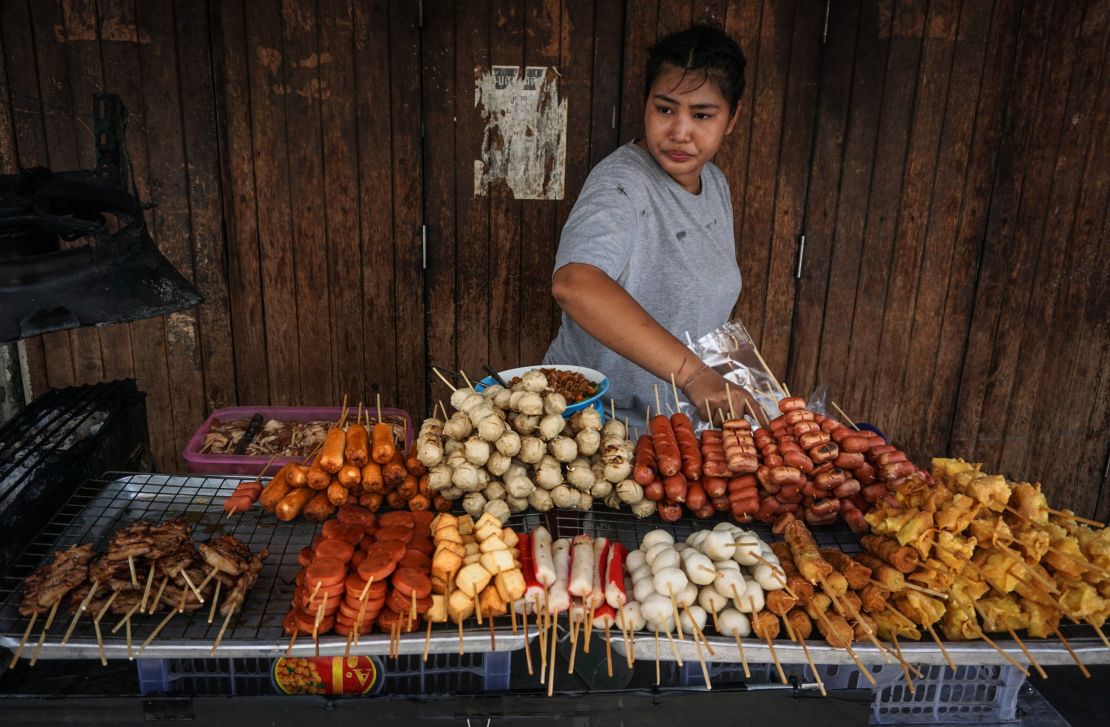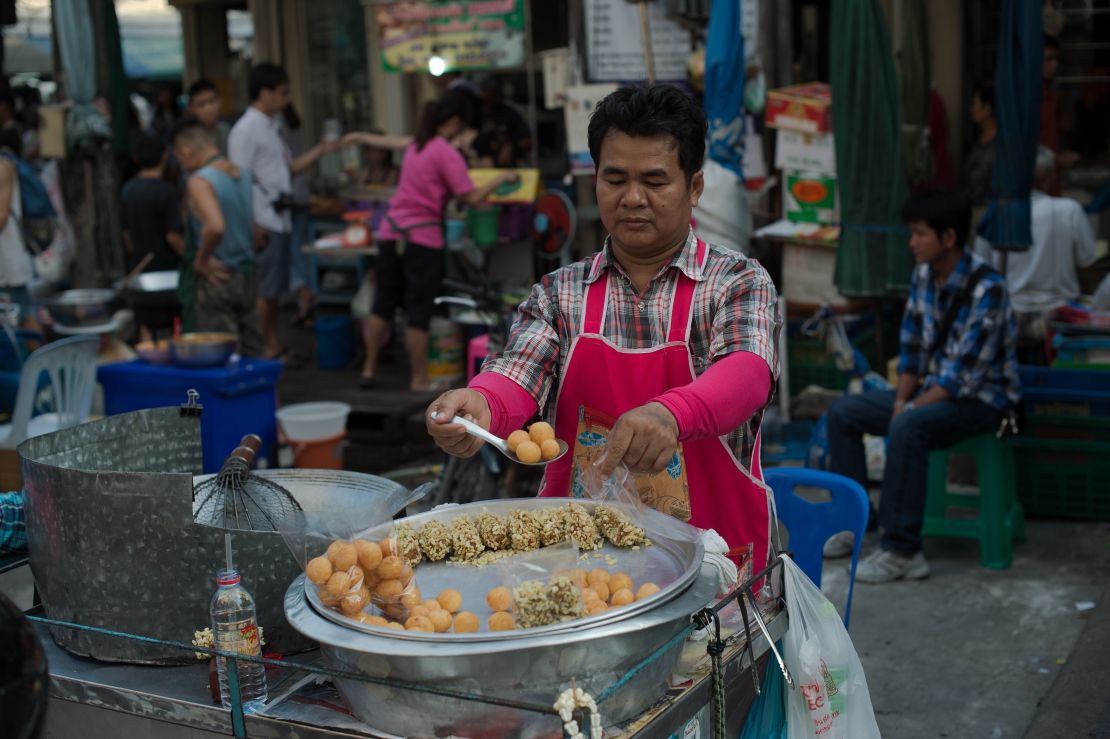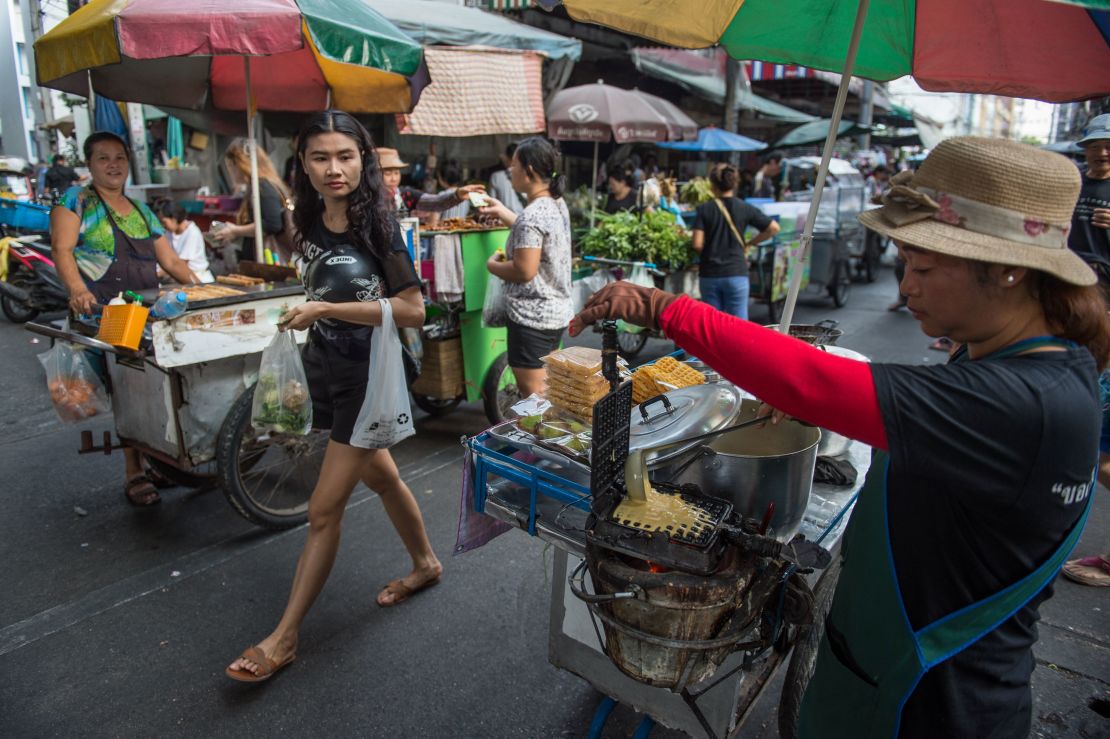When news broke this week that Bangkok was reportedly planning to clear the streets of its beloved street food vendors, outrage broke out among fans of the city’s famously cheap eats as the story racked up global headlines.
It all started when the chief adviser to Bangkok’s governor, Wanlop Suwandee, was quoted by English daily The Nation as saying the city is now “working to get rid of the street vendors from all 50 districts of Bangkok and return the pavements to the pedestrians. Yaowarat and Khao San Road will be our next goal in clearing out illegal vendors.”
Cue the backtracking.
Or not, according to Wanlop, who now tells CNN he was misquoted.
“The Bangkok Metropolitan Administration is not banning street food in Khao San and Yaowarat roads, it’s the opposite,” he says. “It is supporting street food by implementing hygienic measures and organizing traffic around the areas.”
He did confirm the BMA has banned vendors on various walking paths, including those surrounding Siam Discovery, Siam Center and Silom.
So what does it all mean for fans of Bangkok street food?
Leela Punyaratabandhu, author of new book “Bangkok: Recipes and Stories from the Heart of Thailand” explains why the issue is so complicated.

Is the clampdown on street food as bad as it seems?
I wouldn’t worry too much about it at this point. Nobody really knows how it will pan out.
We’re not sure which areas will be affected; it could apply only to the main streets leaving the alleyways the way they are.
Why do some people want street vendors gone?
Not all Bangkokians have warm and fuzzy feelings about the carts and stalls that have occupied public spaces and sidewalks – day and night – for decades (which isn’t exactly legal).
In addition to food carts, there are also tables and stalls selling, as the Thai expression goes, “everything from toothpicks to battleships,” meaning all sorts of ware imaginable.
Bangkok sidewalks are often narrow and walking on one that’s lined with these street carts isn’t easy.
The tight space often forces people to walk in a single file, and the moment someone stops to buy something, they immediately block the already tight walking space.
So to avoid that – and the smoke from grilled food and the splattering and smell of hot frying oil and the puddles from all sorts of washing and cooking activities – pedestrians often have to get off the sidewalk and walk in the street instead.
Sometimes, street carts occupy so much space at a bus stop that commuters need to wait for their buses in the street as well.
This presents danger to both the pedestrians themselves and the motorists becomes part of what makes the city’s traffic worse than it already is.
You can’t blame Bangkokians for wanting to have sidewalks that can actually be walked on.
There’s also concern about cleanliness and the environment.
When you run a food business on a sidewalk, you’re not equipped with the infrastructure that promotes cleanliness, hygiene and environmentally friendly waste disposal.
The dumping of used frying oil right into the street drains? The washing of used dishes and utensils in a bucket of soapy water and the emptying of said bucket right onto the street?
These things happen all the time and they contribute to environmental and health problems.

Wouldn’t this be the end of all things good about the food of Bangkok?
No – not even if the ban is citywide and will be strictly enforced for years to come.
Let’s put things in perspective here.
Street carts are the most visible, the most approachable, the most affordable, and – as some would say – the most fun food operators in Bangkok.
So naturally, they get the most laudatory write-ups among international travel/food writers who often have little access to restaurants with a Thai menu or people’s homes.
The food reportage is often skewed.
Actually, apart from the longstanding and reputable street carts – and there are quite a few – the vast majority of them are far from representative of Bangkok food at its finest.
Most exist mainly to meet the needs for affordable food within a walking distance.
Bangkokians know this, and they set their expectations accordingly.
The blind, indiscriminate glorification of sidewalk food is the failure to see the food of Bangkok the way the locals really see it.
So, no. The ban does present some problems, but the end of Bangkok’s gastronomic culture as we know it isn’t even close to being one of them.
The city has so many more low to moderately priced options to offer.
Most shophouse eateries do not block traffic and have access to things that enhance hygiene such as refrigeration and running water.
And their food is nearly always more superior to that from an average food cart without being much more expensive, if at all.
In fact, if you look at the history of some of these shophouse establishments, you’ll see many of them started out as itinerant vendors who made such great food and were so successful that they could afford a permanent place inside a building.
If these street carts are so problematic, why doesn’t the city get rid of all of them?
This is where things aren’t as clear cut as they seem.
It’s also where empathy is needed from both the opponents and the supporters of the ban.
Bangkok is a crowded home to over 8 million people, many of whom have relocated from economically disadvantaged provinces to look for work opportunities.
Selling food has become a default livelihood for many of these people.
Setting up a stall or a cart on the sidewalk requires little money, and, if they stick with easy food that doesn’t require any specialized skill –and this is often the case these days – starting a business is easy.
No registration. No health inspection.
According to a 2012 study from the Bangkok Metropolitan Administration’s Division of Policy and Planning, this is actually a good thing, because it alleviates the problem of unskilled labor in the city (those who claim that street food represents the best food of Bangkok and that street vendors are the best cooks in the city, take notice!).
In addition, with such low start-up and daily operational costs, street carts are able to provide inexpensive food for the people in every nook and cranny of the city who need it most without them having to travel for it.
These street carts are also vital in keeping the overall prices of prepared food in the city from rising so rapidly that some people can’t catch up.
In terms of tourism, regardless of how the locals feel about street carts, it’s undeniable that they greatly appeal to foreign visitors in the age of gastro-tourism.
Bangkok has been hailed as one of the best food destinations in the world and we should do everything we can to continue to earn that reputation.

Are there any solutions?
This issue has a long history, and it needs to be carefully considered.
Finding practical solutions and compromises that benefit all involved is harder than talking about the problem.
Arguments from an emotional standpoint or terse, dismissive comments berating those who hold the opposing view aren’t helpful.
We need to figure out a way to restore law and order, to keep the city clean and orderly, and to free up the sidewalks for pedestrians – especially the elderly and those with disabilities.
Rules and regulations that are already in place need to be enforced consistently and impartially.
We need to recognize the contribution of these street vendors and make sure these economically disadvantaged members of our society are able to live and work and eat in this increasingly less affordable city.
We need to provide them with infrastructure to promote a more hygienic practice and to minimize the environmental damage that comes from unregulated food operation.
We need to help these vendors get to the point where they can operate in such a way that Bangkokians come to see them as they really are: a contribution and not a nuisance.
We need to figure all these issues out, keeping in mind that what has worked for other cities in the world may not work – or may need serious tweaking for it to work – in Bangkok.
Maybe there are some compromises and workarounds we haven’t considered. There’s got to be a way to create a win-win situation for everybody.
Leela Punyaratabandhu is the author of the award-winning cooking blog She Simmers and the book “Simple Thai Food.” Her latest book, “Bangkok: Recipes and Stories from the Heart of Thailand,” will be released on May 9, 2017.

